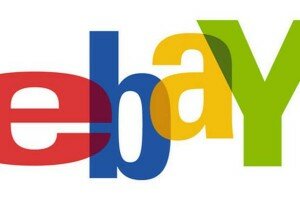
eBay does it right, do you?
What are the top-selling ecommerce sites doing to achieve higher sales? There are simple things you can do to convert browsers into buyer customers online. To find out what they are, we’ve looked to some of the top ecommerce players for inspiration.
By Suzie Larcombe
In this article, you’ll learn:
- The importance of getting your offering spot-on.
- How to use navigation to sell.
- How offering comparisons and suggestions converts.
- The importance of images.
- How user-friendly design can make the difference between profit and loss.
- What makes a great product description and why punchy calls to action are essential.
- The importance of minimal clicks to buy.
When it comes to websites that sell, it’s hard to get away from the likes of Amazon and ebay, but taking a wider view on the ecommerce marketplace, there are several key elements that the front-runners have in common. Top names include the likes of Argos, Tesco, Apple, Marks and Spencer and Next. So what are they doing right?
Great products, prices and service
Sometimes, when people start to sell online, it’s easy to forget the basics of a product offering that they would apply if investing in stocking a bricks-and-mortar shop. This is business suicide because in many ways working online needs an even more focused approach.
No matter where you’re planning to sell your wares, it’s essential to establish that there’s a genuine demand for what you’re planning to sell and that your product, price and promotion are spot on as well as your customer service.
Navigation
One of the key elements that all the top sales sites have in common is ease of navigation. There’s one sure-fire way of losing someone from your site and that’s if you make them jump through hoops to find what they’re looking for. Making sure that your navigation facilitates easy jumping back and forth between pages isn’t only good sense; it’s essential.
Insisting on sleek navigation that’s well positioned on the page will enable you to pack a whole lot of information into one area without making your site seem cluttered. The aim is to make your navigation child’s play. A good idea is to work on the notion that if a 5 year old can track down what they’re looking for, you’ve got it about right.
Comparisons and suggestions
While many of your potential buyers will have very specific needs and wants, some might be open to persuasion to either buy more, or to buy something you’re keener to sell. This is where comparisons and suggestions are worth their weight in gold.
By setting up your site to demonstrate that you have similar or related products available, you can truly maximise your opportunities of upselling and cross-selling as well as influencing buyers to select your preferred product over the product they had previously identified. This is a great way of showcasing special offers and clearing your shelves of stock that might have been hard to move.
Images
While a picture paints a thousand words, it’s a really tough call to replicate the physical touch and feel of a product, and for this reason; you should never under-estimate the importance of high quality images. The thing to bear in mind here is that high quality needn’t mean heavy and slow to load; that would be a crazy route to go.
What you need is images that portray every angle of your product in its best light and are quick to load across the whole range of devices, including mobiles.
User-friendly design
Design is a highly personal affair and what appeals to one person mightn’t necessarily appeal to another, which is precisely why some degree of neutrality is best all round. Neutral needn’t be boring, but the sure thing about neutral is that you won’t offend anyone. Use your design to go a step further by allowing buyers to drill deeper to find out more or to use ‘one click’ to buy.
Great descriptions and punchy calls to action
War and Peace has no place on an ecommerce website, but at the same time, you need to sell your product to the max by giving a factual list of its features and a brief, but compelling summary of its benefits. A great way of converting product features into benefits is to add the phrase “which means that” and then describe what the buyer stands to gain from buying the product.
When it comes to marketing copy, no marketing copywriter worth their salt would submit a piece of sales copy without adding a punchy call to action. A good call to action will leave your site visitor in no doubt as to what they should do next. Things like “buy now”, “try it now” or “add to basket”, without any need to register, will have any wavering buyer clear in their mind about the next step.
Two or three clicks to buy
Ideally, you should aim to have the fewest number of clicks possible to buy. Amazon is a great example of how easy buying online can be. Two or three clicks, plus no need for registration or jumping through hoops is best and should be your aim.









Speak Your Mind